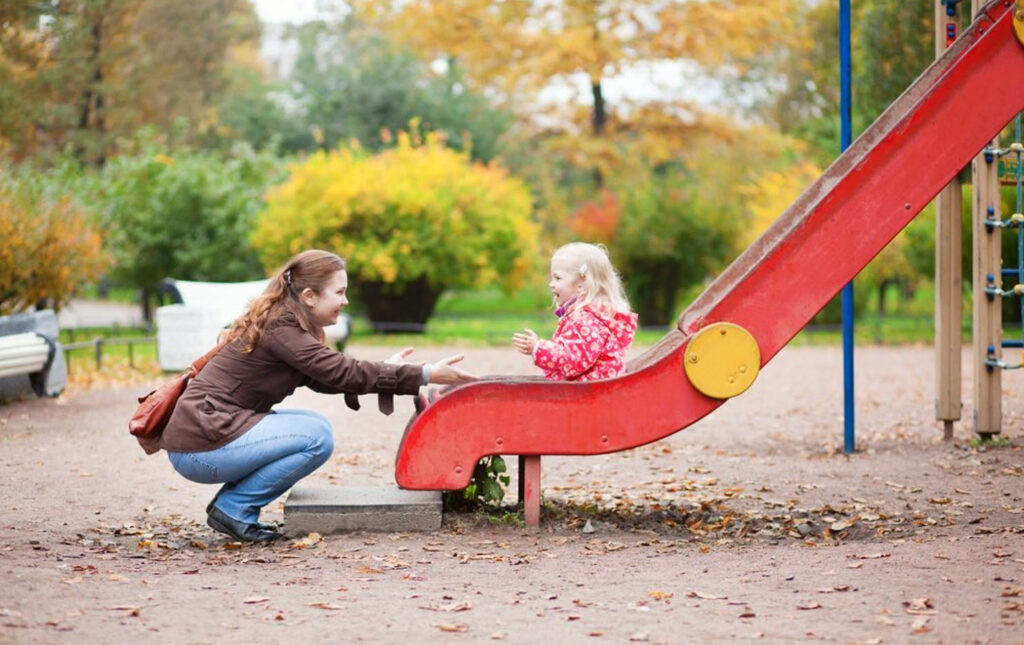Exploring Sensory Development
Exploring Sensory Development

Why is it important?
A child explores the world through his/her senses, which include sight, smell, sound, taste, touch and movement. Sensory integration describes how our body organizes the information it receives from the environment. This is important because it affects how your child functions in everyday life. Providing your child with sensory rich experiences can also improve other areas of development including fine motor, gross motor, language, cognitive development, play skills and the ability engage in daily activities. Sensory activities can be simple and take place at home or in the community (Especially in Southeast Alaska, where we are surrounded by beaches, parks, & nature!).
It is important to note that all of our senses work closely together. Most activities will engage multiple senses at one time. Please keep in mind that every child’s sensory system is unique. Never force a child to do an activity if they are responding negatively. Only do activities that are safe for your child’s age and developmental level.
If you have questions about which activities are appropriate for your child’s age or individual needs please contact our specialists at the Early Learning Program.
More information on the Systems:

Visual/Sight System
The sense of sight provides your child with the ability to understand what the eye sees. This is a complex system that involves not only the structure and ability of the eye but taking the information we are seeing and processing it in the brain.
Activities to try at Home
- Find shadows outside on a sunny day
- I Spy Activities
- Scavenger Hunts
- Pop Bubbles
- Dim lights for calming and relaxation, increase light to help wake up the body
- Puzzles

Hearing/Auditory System
This sense is very important for development of understanding speech and language, communication and social skills. It helps a child to take in different sound information, process it, and respond to it.
Activities to try at Home
- Listening games (repeat a clapping or stomping pattern)
- Sing songs – include songs that have a movement component like ‘Heads, Shoulders, Knees and Toes’ or ‘The Itsy Bitsy Spider’, or songs that require memorization like the ‘ABC’s’
- Make your own instruments (such as drums with pots and pans)
- While playing an instrument or singing, experiment with playing loudly, softly, or in different patterns
- Listening to music (notice if upbeat music helps wake a child up, or slow relaxing music helps calm)
- Play a kazoo, or blow a whistle
- Rain stick (this can be built with an empty paper towel roll and tape on each end, then add beads/rice/beans or anything similar in order to shake it back and forth to make noise).
- Listen to nature (beach, rain, birds, etc) and talk about what you hear

Touch/Tactile System
Touch sends signals to the brain about pressure, pain, vibration and temperature from receptors in the skin. It is one of the largest sensory systems and has a powerful impact on how a child perceives the world. It is how we feel things on our body, and how we discriminate between different items we touch. This system allows us to sense the world around us through our touch.
Activities to try at Home
- Fingerpaint
- Sand play
- Water play in the sink or a tub
- Feel different textures (such as velvet, wool, silk, etc)
- Crawl through a tunnel
- Pop bubbles
- Skin massage with or without lotion
- Bake with an adult and talk about the different ingredients
- Allow a child to play with different foods in order to become familiar and comfortable with different textures, temperatures or smells

Vestibular System
This sensory system responds to changes in head position and to body movement through space. It helps a child balance, and engage in movement activities. The vestibular sensory receptors are located in the inner ear and are stimulated by movement and gravity. Engaging in vestibular activities may help calm a child, or may alert or energize a child.
Activities to try at Home
- Hang upside down on a couch or at the playground (this is intense vestibular input and is usually alerting)
- Jumping jacks
- Going down a slide
- Merry Go Round
- Swing on a playground, hammock, etc. (slow linear movement may be calming)
- Rocking chair
- Trampoline
- Jump rope
- Roll on the floor
- Log rolls

Proprioceptive System
The sense of proprioception allows the brain to know where each body part is and how it is moving. These sensory receptors are located in the muscles, joints and skin. For children, strong proprioceptive systems help them figure out where their bodies are in space, which is foundational to learn complex movements or complete daily tasks. This sense allows a child to ride a bike without having to look at the pedals or handlebars, or walk across a room without bumping into anything. Engaging the proprioceptive system can also help a child regulate his/her emotions and assist with building coping skills.
Activities to try at Home
- Carry or push/pull heavy objects (furniture, wagon, etc)
- Hang on monkey bars
- Wear a weighted backpack
- Bear hugs
- Play tug of war
- March in place
- Animal walks (walk like a crab, bear, or slither like a snake on your belly)
- Wheel barrow walk
- Play catch with a weighted ball
- Kid-friendly yoga
- Offer opportunities for your child to play in different positions such as lying on their belly, sitting, kneeling or standing
- Set up a safe crash pad area for a child to jump or run into (pillow towers or couch cushions)

Smell/Olfactory System
Sensory receptors in our nose pick up information about the odors around us and send the information to our brain. It works closely with the taste/gustatory system as it helps create the flavors we taste in food.
Activities to try at Home
- Use scented markers or crayons
- Safely smell essential oils (peppermint/citrus may be alerting, while lavender/vanilla may be calming)
- Smell flowers
- Smell different foods
- Scratch and sniff stickers
- Close your eyes and talk about what you smell in different locations (beach, restaurant, cooking at home, etc)

Taste/Gustatory System
This sense allows us to taste different foods and flavors. Gustatory activities help children build positive eating and drinking habits, such as identifying and managing foods of various texture, temperature, taste, or smell. This system processes information from the mouth to the brain and creates a response.
Activities to try at Home
- Explore different flavors of foods (sweet, sour, salty spicy, bitter) notice if certain flavors are more alerting and “wake up” the body
- Explore different textures of foods (smooth, lumpy, chewy, crunchy)
- Explore different temperatures of food (warm, cool, cold)
- Blow bubbles
- Lick popsicles
- Try sucking through a straw
- Teething toys
References
Greutman, H., (2018). The 8 sensory systems. Growing Hands on Kids.
(2019) Strategies to help children cope with sensory challenges. Tools to Grow OT.
Cooke, J. (1996). Early Sensory Skills.
